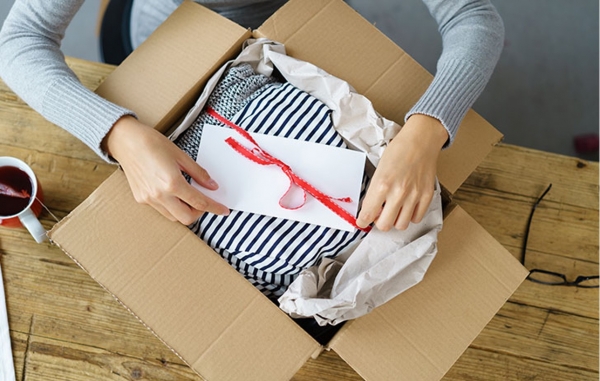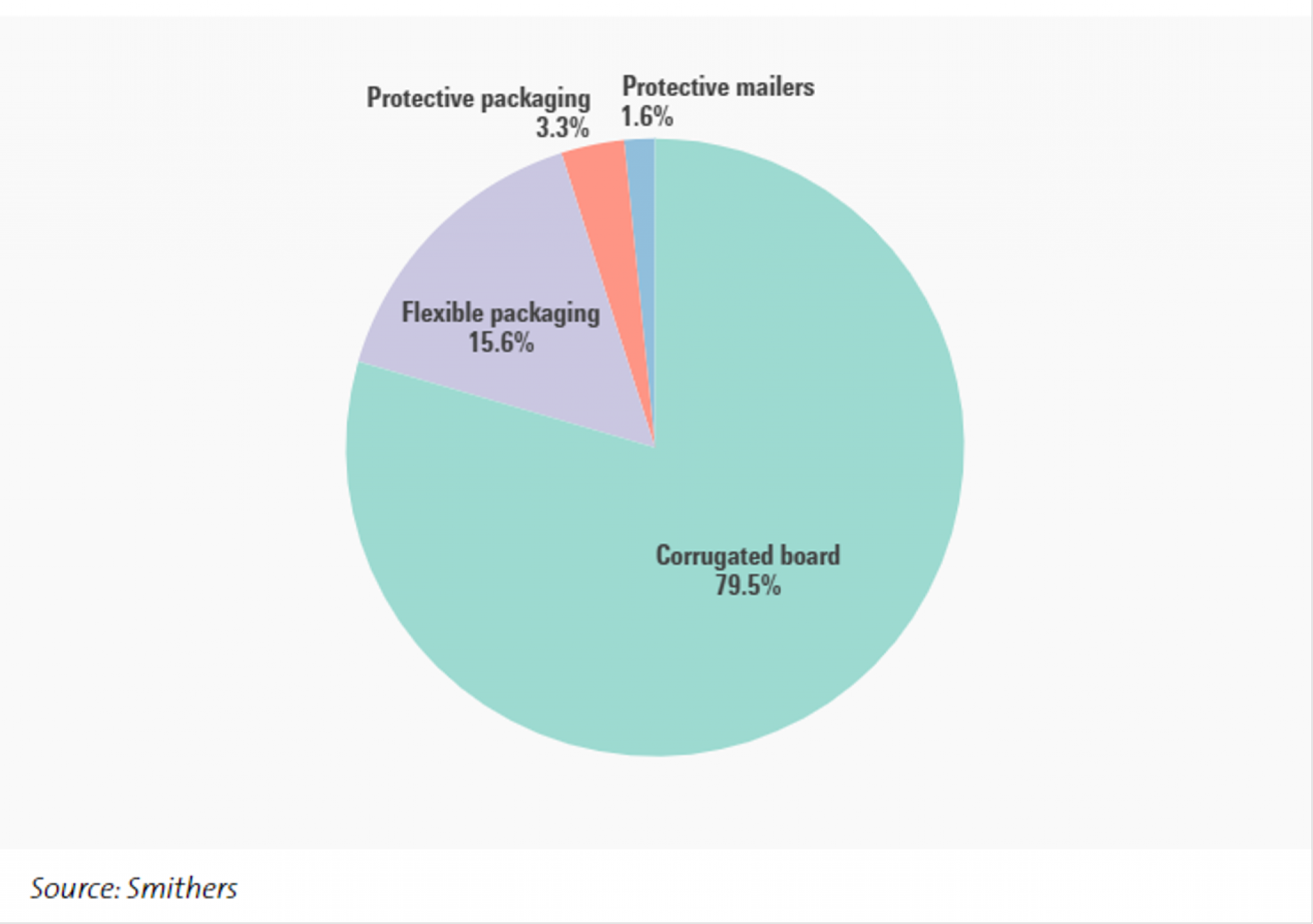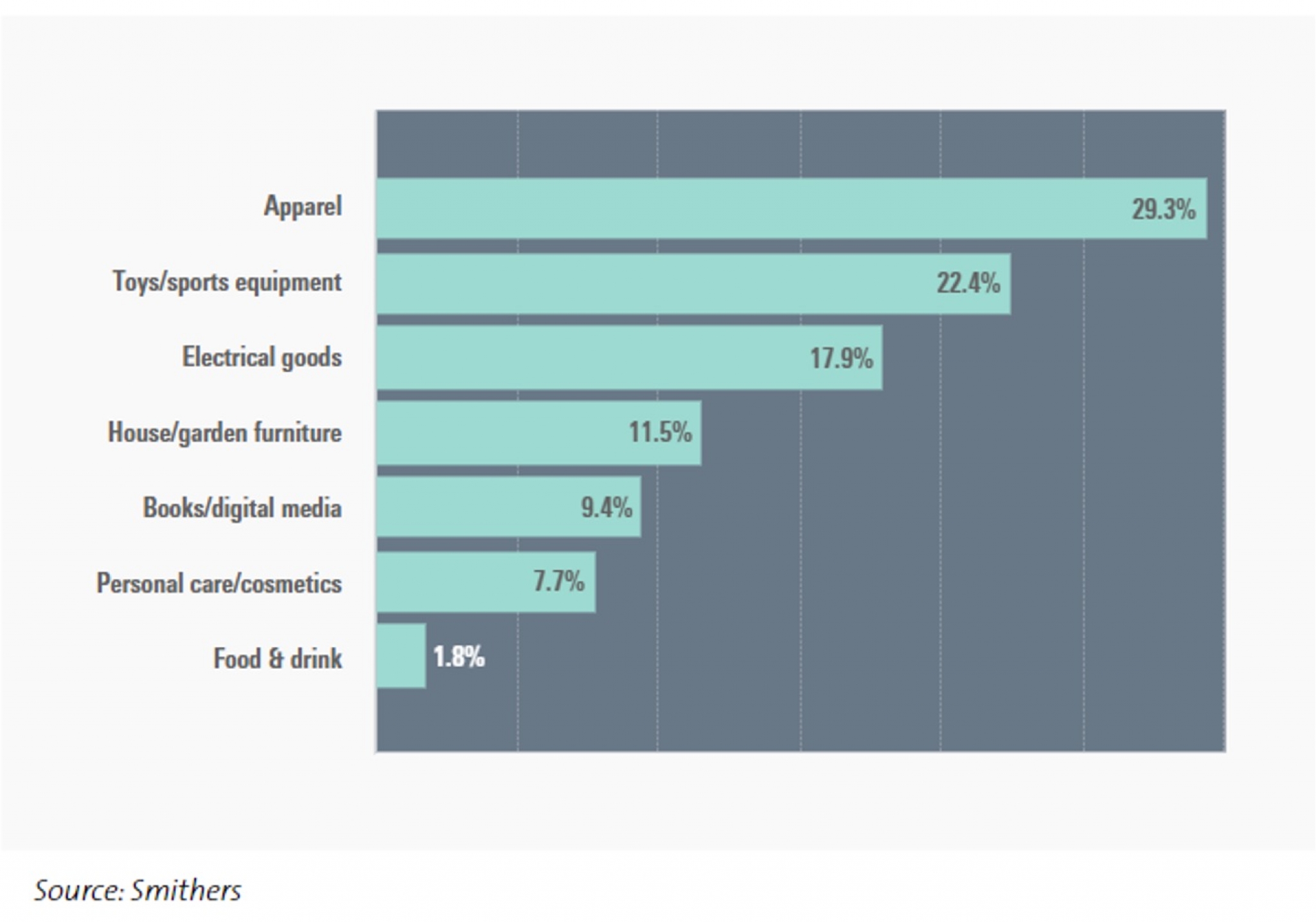Sustainable packaging in E-commerce industry
Posted: 17 February 2022

Have you ever felt frustrated by looking at the overpackaging of products that you bought online? Looking at all the padded bags, fillers, bubble wraps, have you ever wondered that it seems a bit too much? Well, the problem of overpackaging is very common in the e-commerce industry.
In this industry, it is rare that the packaging of a product can be avoided. Nearly all products need to be shipped somewhere, and the most important part of delivering a product is that it arrives undamaged.
The main packaging materials used within the e-commerce market are flexible packaging, corrugated board, protective mailers, and protective packaging. This is because these materials are quite ideal for shipping many goods in the industry.

Global e-commerce packaging market by material, 2020 (% value)
Looking into the main sectors that use packaging within the e-commerce industry, these are: Apparel, Toy/sports equipment, electrical goods, House/garden furniture, Books/digital media, followed by cosmetics and food. In the coming years though, it is expected that the cosmetics sector would have the most use of the packaging as seen in previous years' trends.

Global e-commerce packaging market by end-user sector, 2020 (% value)
Recent developments and efforts to incorporate Circular Economy and Sustainability in society will surely make an impact in the E-commerce industry as well. If the packaging cannot be avoided, it is important to make it sustainable. The packaging’s impact across its whole life cycle needs to be minimized. Therefore, it is important to consider factors such as using recycled and renewable content in the packaging, ensuring that no harmful chemicals are present, designing to optimize the materials, using renewable energy in its production and logistics, and having responsible end-of-life through recycling or composting.
Amazon has recently incorporated various sustainability initiatives where it claims to have minimized over 880,000 tonnes of packaging materials since 2015, which is equivalent to 1.5 billion shipping boxes. One of Amazon’s main initiatives is Frustration-Free Packaging (FFP). It is a scheme that aims at reducing packaging waste and increasing the use of recycled materials. It also enables the option of shipping products in their own packaging without additional packaging. The FFP scheme in 2018, incorporated more certification guidelines and instructions on how to calculate a product-to-packaging ratio, as well as requirements for oversized packages.
Certain other brand owners are also trying to introduce innovative sustainability strategies in the market like the ones having less plastic and more efficient packaging. In the market presently, there has been a lot of concerns about the use of plastic. Many companies have therefore been switching away from plastics towards alternatives made from paper and board which is recyclable and biodegradable, especially for secondary protective packaging. Examples include the use of paper void-fills instead of air cushions, and jiffy bags made from recycled materials instead of bubble wrap. Recyclability is another sustainability-related issue that has been addressed within the e-commerce industry to a large extent. One of the main reasons for the more use of paper and board packaging is its recyclability. In the EU, 86% of all paper and board packaging is now recycled compared to 42% for plastic packaging.
Many companies are making a transition to recycled plastics instead of virgin plastics like Kellogg’s, Lush, and Nestle. While some companies like H& M, Zalando, Amazon France are also switching to using recyclable and biodegradable paper bags.
The EU has also published a set of legislations and recommendations that can be referred to ensure that the packaging follows upcoming guidelines and, in a way future-proofs a business and its packaging choices. These include targets of recycling different packaging materials, taxes on plastic packaging, and the development of infrastructure of reuse and recycling. Check them out here!
Main challenges for businesses in the industry to secure sustainable packaging includes the question of weight vs performance of the packaging, traceability of the packaging’s supply chain, choosing between plastic or paper-based packaging, and the optimization of the material and weight of the packaging. Though there is also an urgent need for more standards and legislations by the responsible players of packaging to enable feasible implementation of sustainable packaging, companies can start doing their part through innovation, collaboration, and better communication with their supply chain partners.
When it comes to what the customers want, various sources indicate that variety in packaging, convenience, sustainability, quality, and hygiene are important aspects for the customers today. This is something important for packaging suppliers and e-commerce platforms to keep in mind while making; packaging choices. Meeting the wishes of customers, while still ensuring cheap, reliable, and sustainable packaging is no simple task, and we understand this.
Sources:
Thomas, J., 2020. The Future of E-commerce Packaging to 2025. Smithers.